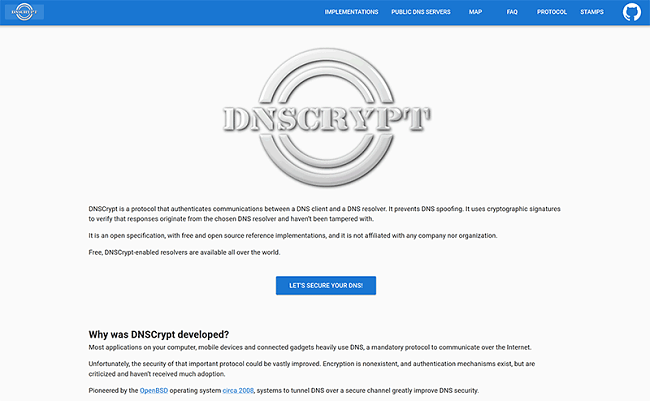
HOW TO USE DNSCRYPT SOFTWARE
Make sure to enable DNSSEC in whichever software you are using with DNSCrypt.
HOW TO USE DNSCRYPT HOW TO
Require_dnssec = false should be require_dnssec = trueġ0: From here you are ready to continue with setup, but this is a huge config file with lots of options, you can tinker as you see fit.ġ1: run. My operating system is Ubuntu14.04, Im trying to use dnscrypt-proxy along with unbound,using unbound listening to port 53, forwarding name-resolve request to port 40, which is being listened by dnscrypt-proxy. Here is how to configure your Windows machine to leverage the power of DNSCrypt to encrypt DNS queries.

Listen_addresses = needs to be changed to listen_addresses = You will need to check Enable DNSCrypt-Proxy to enable the service.

This is a long file and mostly complete I will guide you through the lines you have to change. Go to the Services > DNSCrypt-Proxy > Configuration page to begin configuring DNSCrypt-proxy.

Run vim dnscrypt-proxy.toml to begin editing the config file. toml file with our editor of choice, in this example I will use Vim but you can use nano, emacs, etc. mv example-dnscrypt-proxy.toml dnscrypt-proxy.tomlĩ.5: Now we are going to edit the newly created.
HOW TO USE DNSCRYPT INSTALL
This will be a super simple and easy to follow guide to get you using DNSCrypt and utilize DNSSEC with AdGuard Home and/or Pi-hole on Linux.ġ: Open your terminal of choice or ssh into the machineģ: run cd /opt since this is where we install DNSCryptĤ: You need to download the latest binaries from GitHub with wget in this example we will use the 64bit version (since that is most common)Ĥ.5: THIS ISN'T THE LINK YOU USE, use the latest release that is for your system wget is the correct tool for the job, this is how you download the file wget ĥ: run tar xzvf dnscrypt-proxy-linux_x86_64=2.0. or whichever you have to download for your systemĦ: run mv linux-x86_64 dnscrypt-proxy or whichever is for your system, could be linuxi386 or whatever you downloaded for your system.ħ: Delete the tar file with rm dnscrypt-proxy-linux_x86_64=2.0. or whichever file you have downloaded.Ĩ: cd into the new directory with cd dnscrypt-proxyĩ: use mv to rename the example to the config file we are going to use.


 0 kommentar(er)
0 kommentar(er)
